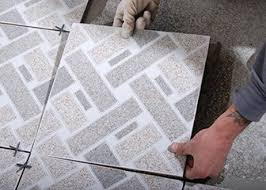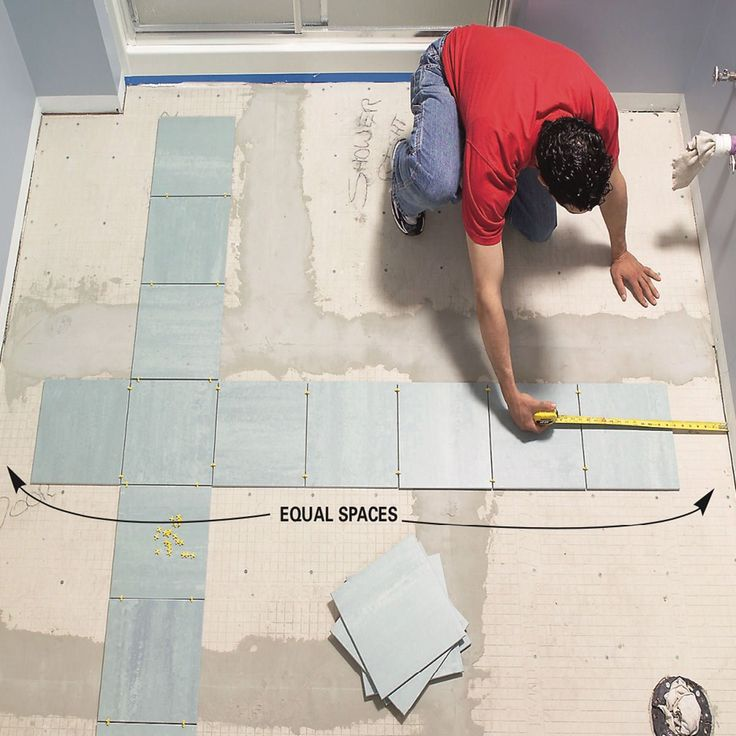Mason Tiling (6 month course)
Mason Tiling click here
Brief Job Description
Mason tiling is responsible for identifying, cutting, grinding, shaping, laying, fixing and finishing the tiles on floors, walls using appropriate tools and equipment, as per the specified standards, patterns, and within dimensional accuracy.

Personal Attributes
The mason tiling is expected to be physically fit to work across various locations with varied environmental conditions. The person should be organized, diligent, methodical, safety-conscious, and a prompt decisionmaker. In addition to being a team player, the individual should have good communication skills.
Lay and fix tiles both horizontally and vertically on wall and floor
Description
This unit describes the skills and knowledge required to lay and fix both natural and processed tiles on
floor, wall and roof surfaces
Scope
The scope covers the following :
Carry out preparatory work prior to fixing of tiles
Check that the tiles are as per the specifications
Measure & cut tiles as per the design, shape and size requirements.
Lay and fix both natural and processed tiles on wall & floors
Check for line, level and alignment
Elements and Performance Criteria
Carry out preparatory work prior to fixing of tiles
To be competent, the user/individual on the job must be able to:
PC1. read and interpret working sketches prior to laying of tiles
PC2. install button marks / level pads as per the tiling requirements using common reference line
PC3. check the basic attributes of the base surface such as compactness, squareness or rightangle slope or fall (in case of floors surface), hacking on surfaces (in case of RCC structure &
walls), and completion of embedded surfaces (including MEP)
PC4. clean and wet base surfaces with water jets (except wood/vinyl )for better adhesion of tiles
PC5. soak tiles in water as per manufacturers specification, if required
PC6. prepare various surfaces as per requirement for different types of tiles such as masonry
plastered surface, reinforced concrete surface, concrete block timber, and vinyl surface
Check that the tiles are as per the specifications
To be competent, the user/individual on the job must be able to:
PC7. check for basic attributes of the tiles like color, shade, size and squareness before
commencement of work
PC8. check batch number of all tiles to be used in order to avoid variations in shade, color or
pattern
PC9. ensure that any protective layer on the tiles is removed prior to use
PC10. check for any damages / cracks on the tiles prior to use
PC11. ensure tiles are cleaned appropriately prior to fixing
Measure & cut tiles as per the design, shape and size requirements
To be competent, the user/individual on the job must be able to:
PC12. carry out proper marking before cutting tiles to required shape and size
PC13. cut tiles as per the design /pattern specifications using appropriate tools to fit around
obstacles & into odd spaces & corners
PC14. minimize wastage of tiles
Lay and fix both natural and processed tiles on wall & floors
To be competent, the user/individual on the job must be able to:
PC15. specify the centre-point or starting point of the surface for tiling as per working
drawings/sketches
PC16. ensure the preparation of bed mortar, cement slurry, cement paste and adhesives is as per
specifications / requirements of tiling works
PC17. identify the laying position of tiles as per arrow marks on the tile box
PC18. maintain consistency of batch number of all tiles
PC19. prepare a bedding of appropriate thickness to act as base for fixing tiles
PC20. apply & spread cement mortar, mastic, glue or other adhesives on the base of tile using
appropriate tools for fixing tiles
PC21. install roof tiles by bedding and pointing in cement mortar or by mechanical means
PC22. check for hollowness of tiled surface using wooden mallet
PC23. put spacers between tiles (if required) to minimize imperfections
PC24. protect the tiled area from damage during & after fixing of tiles
PC25. provide tile trims and strips at corner joints as per requirement
Check for line, level and alignment
To be competent, the user/individual on the job must be able to:
PC26. check and provide required level and specified slope prior to and after tiling
PC27. check vertical and horizontal alignment using appropriate tools during and after tiling
PC28. set out 90-degree angle at corners using builders square or 3-4-5 method

Knowledge and Understanding (KU)
The individual on the job needs to know and understand:
KU1. standard practices for tiling work
KU2. safety rules and regulations for handling and storing relevant tools, equipment, and
materials for relevant works in accordance with organizational norms
KU3. importance of personal protection including the use of related safety gears & equipment in
accordance with organizational norms
KU4. service request procedures for tools, materials and equipment as per organizational norms
KU5. procedure for maintenance of tools and equipment
KU6. sketches of the area / surface on which tiles are to be laid
KU7. basic principles of measurement
KU8. different types of tiles, their sizes, shapes, properties, and application for industrial,
commercial and residential purpose
KU9. how to identify the correct color, shade of tiles, different identical shades and color coding
KU10. different procedure / process for laying tile on floor, wall & roof
KU11. standard specification of all tiling tools and equipment’s and their care and maintenance
KU12. how to select and use basic tools and tackles for laying tiles such as measuring tape/rule,
hammers, mallets, wedges, power wet saws, tile scribes or hand held tile cutters
KU13. various techniques / procedures for cutting different types of tiles to size and shape as per
design requirements
KU14. use of electronic devices like laser level, machine, laser distance meter like Bosch GLL3
professional, Hilti laser PD-E, Bosch GTL 3 tile laser
KU15. basic surface preparation methods for different type of surfaces
KU16. basic methods and techniques of preparing bed mortar, cement slurry and cement paste as
per applicability
KU17. different types of spacers and method of fixing and removing spacers
KU18. different types of tile trims/strips & their uses
Generic Skills (GS)
User/individual on the job needs to know how to:
GS1. write in at least one language, preferably in the local language of the site
GS2. read sketches/routine work drawings, instructions provided for the work, and various
signboards, safety rules, safety tags, exit route information in one or more languages,
preferably in the local language of the site
GS3. speak in one or more language, preferably one of the local language at the site
GS4. communicate orally and effectively with team members
GS5. analyze the safety aspects of the workplace
GS6. plan work and organize required resource effectively
GS7. complete work as per agreed time schedule and quality parameters
GS8. resolve any conflict within the teammates
GS9. evaluate the complexity of the tasks
GS10. identify any violation of safety norms during the work
Apply grouts and sealants for flooring and cladding works
Description
This unit describes the skills & knowledge required to check for voids and uses grouts to seal joints for tile, stone, marble, and granite for flooring and cladding works
Scope
The scope covers the following :
Carry out preparatory work for grouting of tile, stone, marble, and granite works
Apply grout and sealant to seal the void or gap between the tiles, stones, marble, and granite
Check for line, level & alignment
Elements and Performance Criteria
Carry out preparatory work for grouting of tile, stone, marble and granite works
To be competent, the user/individual on the job must be able to:
PC1. read and interpret the working drawings / sketches prior to commencement of work
PC2. ensure curing of placed stone, marble & granite tiles
PC3. ensure joints of tiles are free from debris & carry out vacuum cleaning of the grout lines
PC4. remove thoroughly old grouting compound with appropriate tools prior to re-grouting on old
surface
PC5. prepare different types of grouts as per surface requirements and manufacturers
specifications
PC6. check grout material is of approved color and shade & as per pattern
PC7. check that grout material is of approved type (sanded, un sanded, ) as per design/pattern
requirements
Apply grout and sealant to seal the void or gap between the tiles, stones, marble & granite
To be competent, the user/individual on the job must be able to:
PC8. apply the grout between grout lines/joints using appropriate tool
PC9. press the grout into the joint using appropriate tools and technique
PC10. handle grout float edge properly and prevent it from digging out the grout lines
PC11. use appropriate amount of penetrating sealant on the stones prior to fixing as per
applicability
PC12. remove excess grout from the surface to avoid any grout haze on the surface
PC13. check and ensure that the grout was cured prior to application of sealant
PC14. polish the surface after application of grout in case of epoxy grouts for better aesthetics and
smoother joints
PC15. add additive to cementations grouts as a substitute for water as per specifications
PC16. ensure proper care is taken for moisture sensitive and light colored natural stones to prevent
strain ingress
PC17. ensure proper protective layer at the corners(tile trims/strips) of tiled surfaces
Check for line , level & alignment
To be competent, the user/individual on the job must be able to:
PC18. check and provide required level and specified slope
PC19. check vertical and horizontal alignment using appropriate tools
Knowledge and Understanding (KU)
The individual on the job needs to know and understand:
KU1. standard practices for grouting works
KU2. safety rules and regulations for handling and storing relevant tools, equipment, and
materials for relevant works in accordance with organizational norms
KU3. importance of personal protection including the use of related safety gears & equipment in
accordance with organizational norms
KU4. service request procedures for tools, materials and equipment as per organizational norms
KU5. procedure for maintenance of tools and equipment
KU6. simple sketches for tiling works
KU7. basic principles of measurement
KU8. standard specification of all grouting tools and materials along with their care and
maintenance
KU9. manufacturers instructions on grout suitability, mixing, curing and application to ensure
optimum performance
KU10. how to select and use tools and equipment such as: measuring tape/rule, trowels, grout
floats, surface cleaning sponges
KU11. different types of grouts used for respective tiles /stones including: cement based grout :
Sanded / Non Sanded epoxy based grout
KU12. different types of process used to prepare the respective grouts for tiles and stones
KU13. standard procedure applicable for the application of grouts on the vertical or the horizontal
surface
KU14. different types of liquid polymeric additives (mostly blends of acrylics and latex) added to
cementations grout and their effect
KU15. how to match grout with approved color and shades, as per design
Generic Skills (GS)
User/individual on the job needs to know how to:
GS1. write in at least one language, preferably in the local language of the site
GS2. read sketches/routine work drawings, instructions provided for the work, and various
signboards, safety rules, safety tags, exit route information in one or more languages,
preferably in the local language of the site
GS3. speak in one or more language, preferably one of the local language at the site
GS4. communicate orally and effectively with team members
GS5. analyze the safety aspect of the workplace
GS6. plan work and organize required resource effectively
GS7. complete work as per agreed time schedule and quality parameters
GS8. resolve any conflict within the teammates
GS9. evaluate the complexity of the tasks
GS10. identify any violation of safety norms during the work
Work effectively in a team to deliver desired results at the workplace
Description
This unit describes the skills and knowledge required to work effectively within a team to achieve the
desired results

Scope
The scope covers the following :
Interact and communicate in an effective manner
Support co-workers to execute the project requirements
Practice inclusion
Elements and Performance Criteria
Interact and communicate in an effective manner
To be competent, the user/individual on the job must be able to:
PC1. pass on work related information/ requirement clearly to the team members
PC2. inform co-workers and superiors about any kind of deviations from work
PC3. report any unresolved problem to the supervisor immediately
PC4. obtain instructions from superiors and respond on the same
PC5. communicate to team members/subordinates for appropriate work technique and method
PC6. seek clarification and advice as per the requirement
Support co-workers to execute the project requirements
To be competent, the user/individual on the job must be able to:
PC7. hand over the required material, tools, tackles, equipment and work fronts timely to
interfacing teams
PC8. work together with co-workers in a synchronized manner
Practice inclusion
To be competent, the user/individual on the job must be able to:
PC9. maintain cultural inclusivity at work place
PC10. maintain disability friendly work practices
PC11. follow gender neutral practices at workplace
PC12. address discriminatory and offensive behaviour in a professional manner as per
organizational policy
Knowledge and Understanding (KU)
The individual on the job needs to know and understand:
KU1. own roles and responsibilities
KU2. importance of effective communication
KU3. the consequence of poor teamwork on project outcomes, timelines, safety at the
construction site, etc.
KU4. different modes of communication used at workplace
KU5. importance of creating healthy and cooperative work environment among the gangs of
workers
KU6. different activities within the work area where interaction with other workers is required
KU7. applicable techniques of work, properties of materials used, tools and tackles used, safety
standards that co-workers might need as per the requirement
KU8. importance of proper and effective communication and the expected adverse effects in case
of failure relating to quality, timeliness, safety, risks at the construction project site
KU9. importance and need of supporting co-workers facing problems for the smooth functioning of
work
KU10. the fundamental concept of gender equality
KU11. how to recognize and be sensitive to issues of disability, culture and gender
KU12. legislation, policies, and procedures relating to gender sensitivity and cultural diversity
including their impact on the area of operation
Generic Skills (GS)
User/individual on the job needs to know how to:
GS1. write in at least one language, preferably in the local language of the site
GS2. read the communication regarding work completion, materials used, tools and tackles used,
the resource required, etc.,
GS3. speak in one or more languages, preferably in one of the local language of the site
GS4. listen and follow instructions / communication shared by superiors/ co-workers regarding
team requirements or interfaces during work processes
GS5. communicate orally and effectively with co-workers considering their educational and social
background
GS6. decide on what information is to be shared with co-workers within the team or to the
interfacing gang of workers
GS7. plan work and organize the required resources in coordination with team members
GS8. complete all assigned task in coordination with team members
GS9. take initiative in resolving issues among co-workers or report the same to superiors
GS10. ensure best ways of coordination among team members
GS11. evaluate the complexity of task and determine if any guidance is required from superiors
Plan and organize work to meet expected outcomes
Description
This unit describes the knowledge and the skills required for an individual to plan and organize own work in order to meet expected outcome
Scope
The scope covers the following :
Plan and prepare for work
Organize required resources as per work plan
Complete work as per the plan
Elements and Performance Criteria
Plan and prepare for work

To be competent, the user/individual on the job must be able to:
PC1. identify the targets and timelines set by superiors
PC2. determine the work requirements corresponding to
task(drawings/schedules/instructions/methodology), safety, tools and equipment prior to
commencement of task
PC3. plan the work by analyzing the required outcomes, work procedures, allotted time, resource
availability and known priorities
PC4. prepare the work areas in coordination with team members
PC5. plan for waste collection and disposal prior to and after completion of work
Organise required resources as per work plan
To be competent, the user/individual on the job must be able to:
PC6. arrange the required manpower prior to commencement of work
PC7. organize the required materials, tools and tackles required for the task
Complete work as per the plan
To be competent, the user/individual on the job must be able to:
PC8. engage allocated manpower in an appropriate manner
PC9. employ correct tools, tackles and equipment for the desired work
PC10. provide guidance to the subordinates to obtain desired outcome
PC11. use resources in an optimum manner to avoid any unnecessary wastage
PC12. use tools, tackles and equipment carefully to avoid damage
PC13. ensure the work processes adopted are in line with the specified standards and instructions
PC14. complete the work with the allocated resources within specified time
PC15. clean and organize the workplace after completion of task
Knowledge and Understanding (KU)
The individual on the job needs to know and understand:
KU1. importance of proper housekeeping including safe waste disposal
KU2. policies, procedures and work targets set by superiors
KU3. how to identify work activities that need to be planned and organized
KU4. how to determine the task requirements
KU5. how to determine the quality requirements related to the task
KU6. how to undertake all aspect of planning and organizing the task, including interpretation of
task, reading drawing/schedules, arranging resources, reporting problems etc.
KU7. how to implement the planned activities
KU8. how to use available resources in a judicious and appropriate manner to minimize wastages or
damage
Generic Skills (GS)
User/individual on the job needs to know how to:
GS1. write in one or more language, preferably the local language at the site
GS2. read communication from co-workers, superiors and notices from other departments as per
requirement of the level
GS3. speak in one or more language, preferably one of the local language at the site
GS4. follow communication shared by co-workers regarding standard work processes, resources
available, timelines, etc.

GS5. communicate effectively with co-workers and subordinates
GS6. decide on what sequence is to be adopted for execution of work
GS7. plan and organize the materials, tools, tackles and equipment required to execute the work
GS8. complete all assigned task with proper planning and organizing
GS9. analyze areas of work which could result in a delay of work, wastage of material or damage
to tools and tackles
GS10. evaluate potential solutions to minimize avoidable delays and wastages at the construction
site
Work according to personal health, safety and environment protocols at construction site
Description
This NOS covers the skill and knowledge required for an individual to work according to personal health,
safety and environmental protocols at construction site
Scope
The scope covers the following :
Follow safety norms as defined by organization
Adopt healthy & safe work practices
Implement good housekeeping and environment protection process and activities
Follow infection control guidelines as per applicability
Elements and Performance Criteria
Follow safety norms as defined by the organization
To be competent, the user/individual on the job must be able to:
PC1. identify and report any hazards, risks or breaches in site safety to the appropriate authority
PC2. follow emergency and evacuation procedures in case of accidents, fires, natural calamities
PC3. follow recommended safe practices in handling construction materials, including chemical
and hazardous material whenever applicable
PC4. follow all the protocols and safety techniques conveyed during safety awareness programs
like Tool Box Talks, safety demonstrations and mock drills conducted at the site
PC5. select and operate different types of fire extinguishers corresponding to various types of fires
as per EHS guideline
PC6. identify near miss, unsafe condition and unsafe act
Adopt healthy & safe work practices
To be competent, the user/individual on the job must be able to:
PC7. use appropriate Personal Protective Equipment (PPE) as per work requirements for : Head
Protection, Ear protection, Fall Protection ,Foot Protection, Face and Eye Protection, Hand
and Body Protection , and Respiratory Protection (if required)
PC8. handle all required tools, tackles, materials and equipment safely
PC9. follow safe disposal of waste, harmful and hazardous materials as per EHS guidelines
PC10. check and install all safety equipment as per standard guidelines
PC11. follow safety protocols and practices as laid down by site EHS department
PC12. obtain “height pass” clearance for working at heights
Implement good housekeeping practices
To be competent, the user/individual on the job must be able to:
PC13. collect, segregate and deposit construction waste into appropriate containers based on their
toxicity or hazardous nature
PC14. apply ergonomic principles wherever required
Follow infection control guidelines as per applicability
To be competent, the user/individual on the job must be able to:
PC15. follow recommended personal hygiene, workplace hygiene and sanitization practices
PC16. clean and disinfect all materials, tools and supplies before and after use
PC17. report immediately to concerned authorities regarding signs and symptoms of illness of self
and others
Knowledge and Understanding (KU)
The individual on the job needs to know and understand:
KU1. reporting procedures in cases of breaches or hazards for site safety, accidents, and
emergency situations as per guidelines
KU2. types of safety hazards at construction sites
KU3. basic ergonomic principles as per applicability
KU4. the procedure for responding to accidents and other emergencies at site
KU5. use of appropriate personal protective equipment based on various working conditions
KU6. importance of handling tools, equipment, and materials as per applicable norms
KU7. effect of construction material on health and environments as per applicability
KU8. various environmental protection methods as per applicability
KU9. storage of waste including non-combustible scrap material and debris, combustible scrap
material and debris, general construction waste and trash (non-toxic, non-hazardous), any
other hazardous wastes and any other flammable wastes at the appropriate location
KU10. how to keep the workplace neat and tidy so as to be safe
KU11. how to use hazardous material in a safe and appropriate manner as per applicability
KU12. types of fire
KU13. procedure of operating different types of fire extinguishers
KU14. safety relevant to tools, tackles, and equipment as per applicability
KU15. housekeeping activities relevant to task
KU16. ways of transmission of infection
KU17. ways to manage infectious risks at the workplace
KU18. different methods of cleaning, disinfection, sterilization, and sanitization
KU19. symptoms of infection like fever, cough, redness, swelling, and inflammation
Generic Skills (GS)
User/individual on the job needs to know how to:
GS1. write in at least one language, preferably in the local language of the site
GS2. fill safety formats for near miss, unsafe conditions and safety suggestions
GS3. read in one or more language, preferably in the local language of the site
GS4. speak in one or more language, preferably in one of the local language of the site
GS5. listen to instructions/communication shared by site EHS and superiors regarding site safety,
and conducting the toolbox talk
GS6. identify potential safety risks and report to the appropriate authority
GS7. assess and analyze areas which may affect health, safety and environment protocol on the
site








